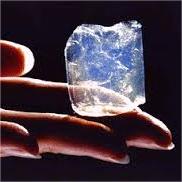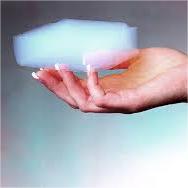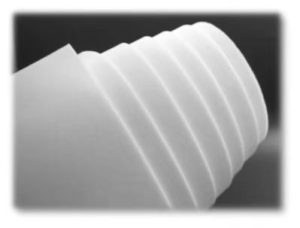Professional industry ceramic supplier, silicon nitride, silicon carbide, aluminum nitride and any other kinds of ceramics.
1. Introduction
In a major development reported just hours ago, a leading U.S.-based advanced ceramics manufacturer announced a breakthrough in sintering technology that significantly enhances the thermal shock resistance of silicon carbide crucibles—potentially reshaping how foundries and laboratories approach high-temperature melting processes. This innovation arrives amid growing global demand for durable, energy-efficient refractory components, especially as industries pivot toward cleaner metallurgy and semiconductor-grade purity standards.

Silicon carbide crucibles have long been the go-to choice for melting non-ferrous metals like aluminum, copper, and zinc due to their exceptional hardness, thermal conductivity, and resistance to chemical corrosion. But they’re not alone in the advanced ceramics arena. Competing materials—especially silicon nitride and even boron carbide—are gaining traction in niche applications where extreme mechanical strength or oxidation resistance is paramount. In this deep dive, we’ll compare silicon carbide crucibles with alternatives, unpack their real-world performance, and clarify where each excels.
2. Silicon Carbide Crucibles: The Industry Standard
Silicon carbide (SiC) is a compound of silicon and carbon, renowned for its hardness—second only to diamond—and its ability to withstand temperatures exceeding 1,600°C. When fabricated into a crucible, it offers rapid heat transfer, minimal thermal expansion, and excellent resistance to molten metal erosion. These traits make silicon carbide crucibles indispensable in foundries, jewelry casting, and even solar-grade silicon production.
Beyond industrial use, the versatility of silicon carbide has spilled into consumer goods. You’ll find it in products like silicon carbide ceramic baking dishes, silicon carbide ceramic dinner plates, and even silicon carbide ceramic butter dishes—valued for their durability and oven-to-table functionality. However, while these kitchen items leverage SiC’s thermal stability, they are typically composites or glaze-enhanced versions rather than pure structural SiC.
3. Silicon Nitride Crucibles: The High-Performance Alternative

Enter silicon nitride (Si3N4)—a less common but increasingly relevant player. Unlike silicon carbide, silicon nitride exhibits superior fracture toughness and better resistance to thermal shock under rapid cycling conditions. This makes silicon nitride crucibles ideal for applications involving repeated heating and cooling, such as in aerospace alloy processing or laboratory synthesis of reactive compounds.
Manufacturers like those operating a silicon nitride crucible factory often tailor formulations for specific needs—offering custom silicon nitride heat shields, silicon nitride rings, and silicon nitride plates for extreme environments. While more expensive than SiC, silicon nitride’s performance in oxidizing atmospheres and its lower reactivity with certain slags give it a strategic edge in precision metallurgy.
4. Boron Carbide vs. Silicon Carbide: Where Do They Stand?
When comparing boron carbide vs silicon carbide, the key differentiator is application context. Boron carbide (B4C) is harder and lighter, making it ideal for armor and abrasive nozzles—but it’s far more brittle and costly. Silicon carbide, by contrast, strikes a balance between hardness, thermal conductivity, and manufacturability. For crucibles, SiC wins hands-down due to its proven scalability and compatibility with molten metals.
That said, boron carbide finds use in specialized components like zirconia nozzles or boron nitride ceramic tubes, but rarely as a crucible material. Its sensitivity to oxidation above 500°C limits high-temperature utility unless used in inert atmospheres.

5. Beyond Crucibles: The Expanding Universe of Silicon Carbide Ceramics
The utility of silicon carbide extends well beyond melting vessels. Industrial sectors rely on rbsic silicon carbide tile blocks for kiln linings, silicon carbide burner nozzles for efficient combustion, and silicon carbide bricks for furnace construction. In fluid handling, silicon carbide ceramic pipes and silicon carbide thermocouple protection tubes ensure longevity in corrosive, high-heat environments.
Even in everyday contexts, you’ll encounter silicon carbide ceramic serving bowls, silicon carbide ceramic pasta bowls, and handcrafted silicon carbide ceramic plates—often marketed for their sleek black finish (silicon carbide black ceramic plates) or artisanal appeal (silicon carbide handcrafted ceramic plates). Meanwhile, technical components like silicon carbide discs, silicon carbide grinding discs, and silicon carbide ceramic disk taps demonstrate the material’s adaptability across mechanical and plumbing systems.
6. Material Selection: Practical Considerations
Choosing between a silicon carbide crucible and a silicon nitride alternative hinges on three factors: temperature profile, chemical environment, and budget. SiC is cost-effective for steady-state high-temp operations; Si3N4 shines in dynamic thermal cycles. Neither replaces alumina (Al2O3) or zirconia crucibles in all scenarios—each advanced ceramic has its niche.
For instance, zirconia crucibles are preferred for reactive melts like titanium, while alumina tubes dominate in moderate-temperature lab setups. Understanding these distinctions prevents over-engineering—and overspending.
7. Conclusion
Silicon carbide crucibles remain the workhorse of high-temperature industrial processing, backed by decades of reliability and an expanding footprint in both technical and consumer ceramics. Yet silicon nitride—and to a lesser extent, boron carbide—offers compelling advantages in specialized domains. As sintering technologies evolve and material science advances, the line between these advanced ceramics will blur, but informed selection based on real-world demands will always be key.
Our Website founded on October 17, 2012, is a high-tech enterprise committed to the research and development, production, processing, sales and technical services of ceramic relative materials such as Silicon. Our products includes but not limited to Boron Carbide Ceramic Products, Boron Nitride Ceramic Products, Silicon Carbide Ceramic Products, Silicon Nitride Ceramic Products, Zirconium Dioxide Ceramic Products, etc. If you are interested, please feel free to contact us.



